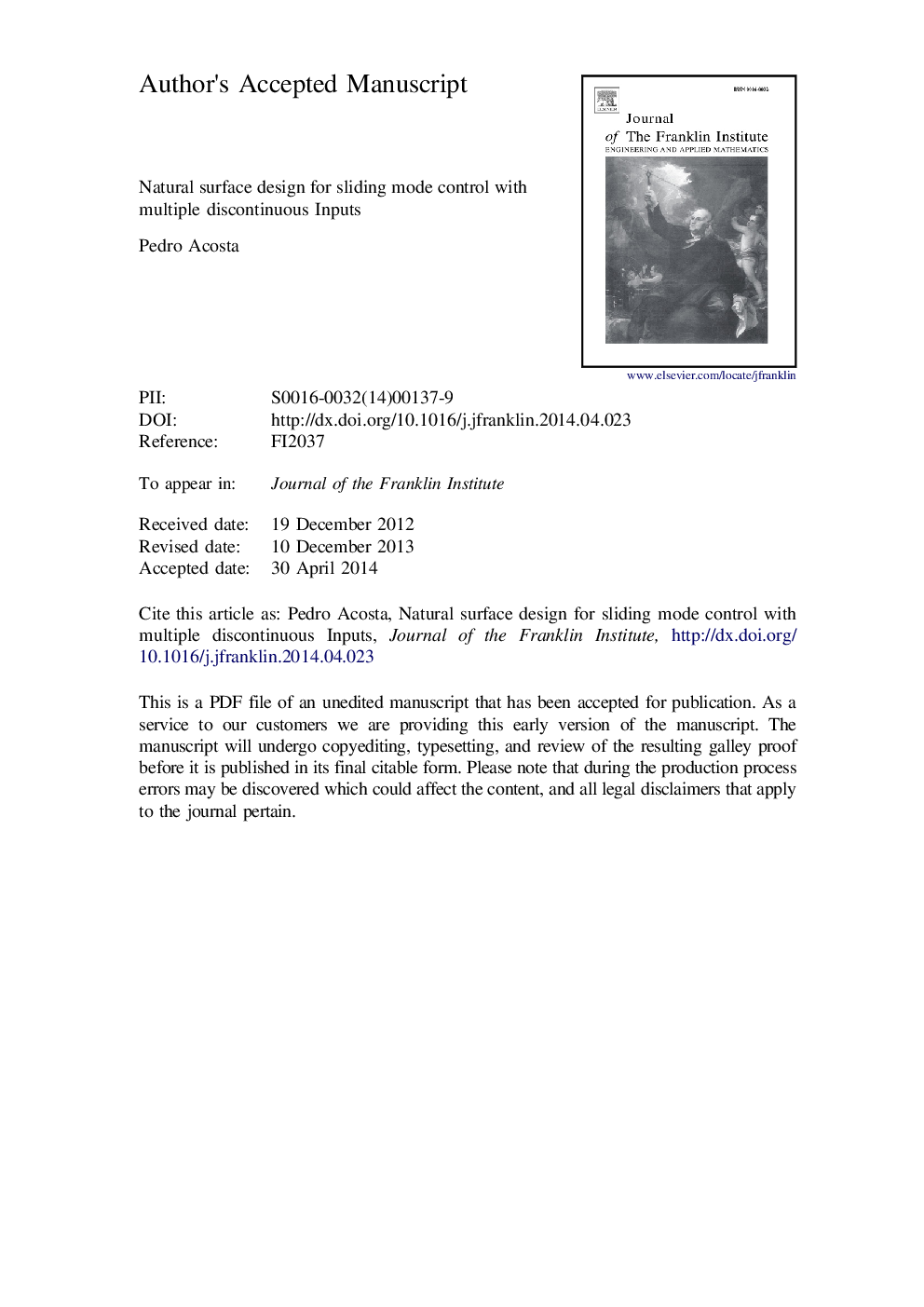| Article ID | Journal | Published Year | Pages | File Type |
|---|---|---|---|---|
| 4975340 | Journal of the Franklin Institute | 2014 | 20 Pages |
Abstract
It is well known that sliding mode control is based on the definition of an invariant manifold, where the system dynamics are forced to in a finite time. Such a manifold is somewhat arbitrarily defined, as long as the system dynamics are stable on it. Computational and control effort may vary depending on selected manifold. Obviously, if a system has naturally acceptable stable dynamics around a desired equilibrium point, no control is needed unless uncertainties or disturbances are present. It would be desirable that if such a system had uncertainties or disturbances, the control effort be designed only to overcome the effect of such factors. For a system with first order dynamics and affine control input, designing a sliding mode control overcoming only such uncertainties or disturbances is a trivial task. When a higher order dynamics system is involved, unit control may be used, where the input control signals are not discontinuous, but when only discontinuous control inputs are available, a design approach is not readily available. In this paper, taking advantage of the natural stable dynamics of a system, a sliding mode control approach is introduced for designing multiple discontinuous control inputs, where the control effort overcomes only uncertainties, disturbances or unstable dynamics. Two illustrative examples are given in order to show the feasibility of the method.
Keywords
Related Topics
Physical Sciences and Engineering
Computer Science
Signal Processing
Authors
Pedro Acosta,
